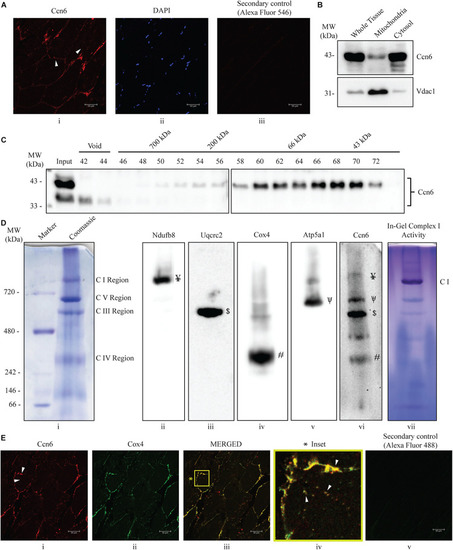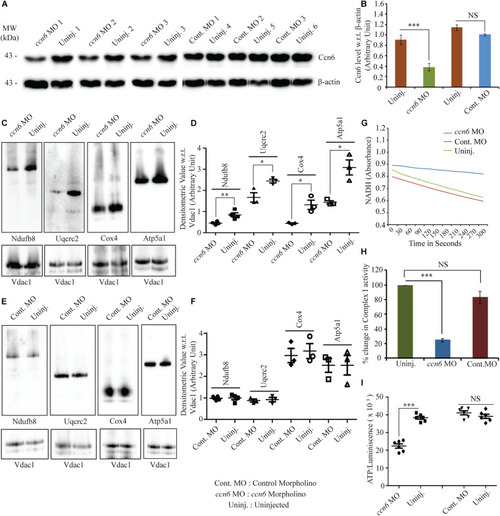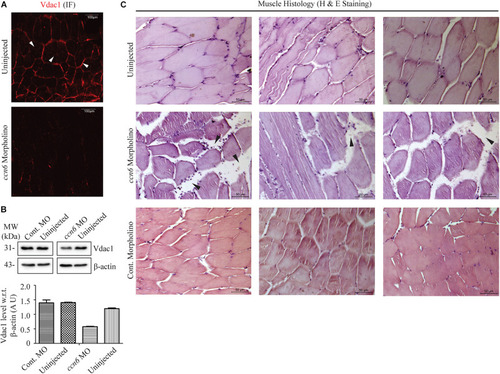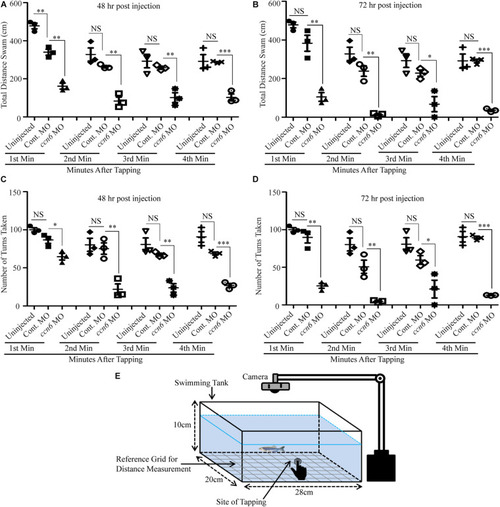- Title
-
Ccn6 Is Required for Mitochondrial Integrity and Skeletal Muscle Function in Zebrafish
- Authors
- Sengupta, A., Padhan, D.K., Ganguly, A., Sen, M.
- Source
- Full text @ Front Cell Dev Biol
|
Ccn6 is expressed in zebrafish skeletal muscle and remains associated with mitochondrial respiratory complexes. EXPRESSION / LABELING:
|
|
Ccn6 depletion inhibits mitochondrial respiratory complex assembly and activity in zebrafish muscle. |
|
Ccn6 depletion causes loss of muscle mitochondrial abundance and alterations in muscle organization. |
|
Depletion of Ccn6 expression in zebrafish skeletal muscle inhibits locomotion in response to stimulus. |




